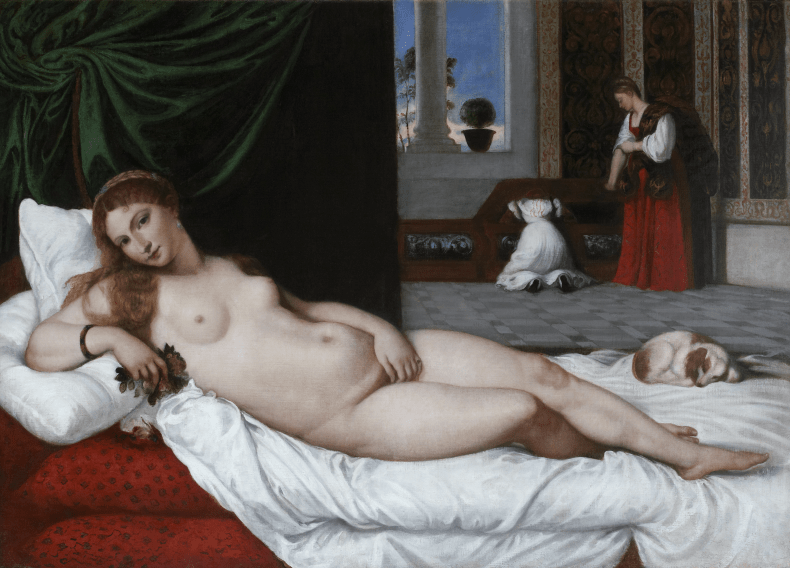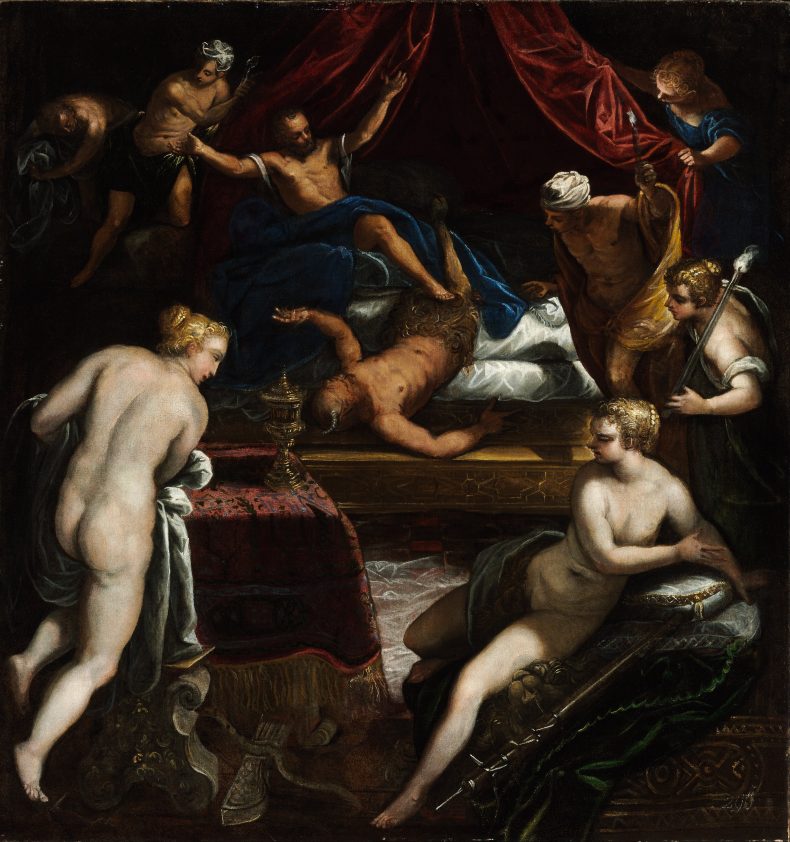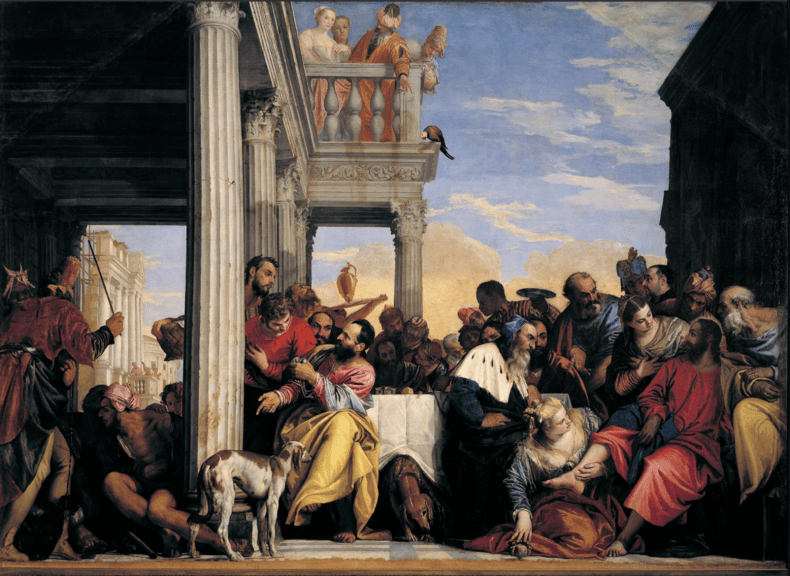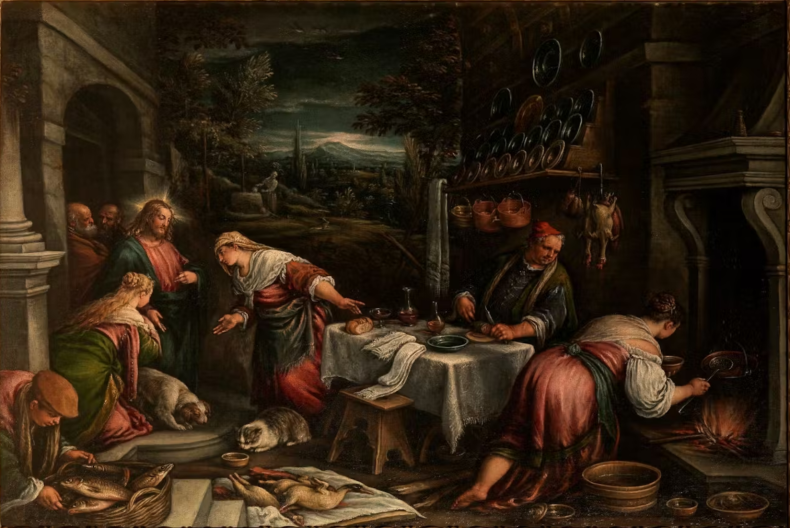
 ‘Four things to see’ is sponsored by Bloomberg Connects, the free arts and culture app. Bloomberg Connects lets you access museums, galleries and cultural spaces around the world on demand. Download the app here to access digital guides and explore a variety of content.
‘Four things to see’ is sponsored by Bloomberg Connects, the free arts and culture app. Bloomberg Connects lets you access museums, galleries and cultural spaces around the world on demand. Download the app here to access digital guides and explore a variety of content.
Each week we bring you four of the most interesting objects from the world’s museums, galleries and art institutions, hand-picked to mark significant moments in the calendar.
The art of the Venetian School of the Italian Renaissance, which evolved from the work of Giovanni and Gentile Bellini and flourished through luminaries such as Giorgione, Titian, Veronese and Tintoretto, is renowned and beloved for its use of colour. Artists of the School used vibrant hues to capture the atmosphere and emotional depth of the scenes they were painting. They are also known for their use of naturalistic light, which stood in contrast to styles that prevailed elsewhere in Italy at the time.
Tintoretto was renowned for his distinctive style, which combined drama, energetic brushwork and vibrant colour. As today marks the anniversary of his death in 1594, it’s an opportune time to explore the allure and enduring legacy of the Venetian artistic tradition through four works of art.
Venus of Urbino (after Titian) (1823), William Etty. Royal Scottish Academy, Edinburgh

Venus of Urbino (after Titian) (1823), William Etty
Royal Scottish Academy, Edinburgh
William Etty’s meticulously crafted copy of Titian’s iconic Venus of Urbino, executed during a Grand Tour visit to the Uffizi Gallery in 1823, stands as a testament to his enduring reverence for the Venetian master. The work’s sumptuous detail and fidelity to Titian’s original captivated viewers at the time. Find out more on the Bloomberg Connects app by clicking here on your mobile device, or by scanning the QR code at the bottom of this page.
Hercules Expelling the Faun from Omphale’s Bed (c. 1585), Jacopo Tintoretto. Museum of Fine Arts, Budapest. Photo: © Museum of Fine Arts, Budapest

Hercules Expelling the Faun from Omphale’s Bed (c. 1585), Jacopo Tintoretto
Museum of Fine Arts, Budapest
Tintoretto’s dynamic depiction of Hercules’s comical encounter with Pan – a case of cross-dressing and mistaken identity – is part of a series commissioned by Emperor Rudolf II, and showcases the artist’s late-career prowess. Through swirling forms and dramatic lighting, Tintoretto imbues the scene with a palpable sense of energy and amusement, drawing viewers into the mythological narrative. Click here to find out more.
Feast in the House of Simon (c. 1565), Paolo Veronese. Galleria Sabauda, Turin

Feast in the House of Simon (c. 1565), Paolo Veronese
Galleria Sabauda, Turin
Paolo Veronese’s monumental portrayal of the feast at the house of Simon the Pharisee exemplifies his mastery of grandiose compositions and sumptuous colour. Commissioned for the refectory of San Sebastiano, a Hieronymite monastery in Venice, this work immerses viewers in a lavish banquet scene, marrying religious subject matter with opulent detail to create a visual feast. Click here to learn more.
Christ in the House of Mary, Martha and Lazarus (c. 1576–77), Jacopo and Francesco Bassano. Pitti Palace, Florence

Christ in the House of Mary, Martha, and Lazarus (c. 1576–77), Jacopo and Francesco Bassano
Pitti Palace, Florence
Jacopo and Francesco Bassano’s rendition of this biblical episode blends religious narrative with vivid depictions of rustic life. Amid bustling domestic activity, the painting invites contemplation on spiritual priorities over worldly distractions, offering a rich tableau of 16th-century Venetian domesticity intertwined with moral allegory. Click here to find out more.
![]() ‘Four things to see’ is sponsored by Bloomberg Connects, the free arts and culture app. Bloomberg Connects lets you access museums, galleries and cultural spaces around the world on demand. Download the app here to access digital guides and explore a variety of content or scan the QR code.
‘Four things to see’ is sponsored by Bloomberg Connects, the free arts and culture app. Bloomberg Connects lets you access museums, galleries and cultural spaces around the world on demand. Download the app here to access digital guides and explore a variety of content or scan the QR code.


